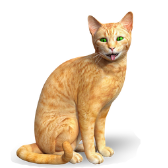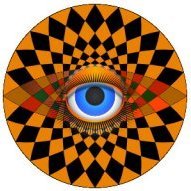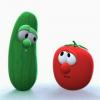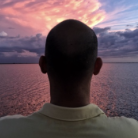-
Posts
1,157 -
Joined
-
Last visited
Reputation Activity
-
 smadell got a reaction from PaulEC in Is there a preferred way to dodge and burn?
smadell got a reaction from PaulEC in Is there a preferred way to dodge and burn?
Ask 5 people how to dodge and burn, and you'll probably get 7 different answers. The answer to the question about a preferred way to dodge and burn is that it's the method you prefer.
That having been said, and despite all the possible complications that can be added, I almost always dodge and burn using a single 50% grey layer set to Overlay blend mode. I brush in black and/or white with a low flow soft brush (usually 100% opacity, 1-2% flow, 0% hardness) and build up the effect slowly.
I never use the Dodge and Burn tools because they are, at heart, destructive tools. Sure, you can use them on a duplicate layer. But you still can't go back to fix a mistake (at least, not easily) without undoing lots of work in between. I prefer to do things non-destructively whenever possible, and that's what doing dodge and burn on a separate layer accomplishes.
It's also been stated that the 50% grey fill in the Dodge and Burn layer is superfluous. You could just add an empty pixel layer and do the black and white brush strokes there. That's true, but I find that when it comes time to actually look at the dodge and burn layer, having the 50% grey background lets me see what I've done much more easily.
-
 smadell got a reaction from Alfred in Is there a preferred way to dodge and burn?
smadell got a reaction from Alfred in Is there a preferred way to dodge and burn?
Ask 5 people how to dodge and burn, and you'll probably get 7 different answers. The answer to the question about a preferred way to dodge and burn is that it's the method you prefer.
That having been said, and despite all the possible complications that can be added, I almost always dodge and burn using a single 50% grey layer set to Overlay blend mode. I brush in black and/or white with a low flow soft brush (usually 100% opacity, 1-2% flow, 0% hardness) and build up the effect slowly.
I never use the Dodge and Burn tools because they are, at heart, destructive tools. Sure, you can use them on a duplicate layer. But you still can't go back to fix a mistake (at least, not easily) without undoing lots of work in between. I prefer to do things non-destructively whenever possible, and that's what doing dodge and burn on a separate layer accomplishes.
It's also been stated that the 50% grey fill in the Dodge and Burn layer is superfluous. You could just add an empty pixel layer and do the black and white brush strokes there. That's true, but I find that when it comes time to actually look at the dodge and burn layer, having the 50% grey background lets me see what I've done much more easily.
-
 smadell got a reaction from thusband in Is there a preferred way to dodge and burn?
smadell got a reaction from thusband in Is there a preferred way to dodge and burn?
Ask 5 people how to dodge and burn, and you'll probably get 7 different answers. The answer to the question about a preferred way to dodge and burn is that it's the method you prefer.
That having been said, and despite all the possible complications that can be added, I almost always dodge and burn using a single 50% grey layer set to Overlay blend mode. I brush in black and/or white with a low flow soft brush (usually 100% opacity, 1-2% flow, 0% hardness) and build up the effect slowly.
I never use the Dodge and Burn tools because they are, at heart, destructive tools. Sure, you can use them on a duplicate layer. But you still can't go back to fix a mistake (at least, not easily) without undoing lots of work in between. I prefer to do things non-destructively whenever possible, and that's what doing dodge and burn on a separate layer accomplishes.
It's also been stated that the 50% grey fill in the Dodge and Burn layer is superfluous. You could just add an empty pixel layer and do the black and white brush strokes there. That's true, but I find that when it comes time to actually look at the dodge and burn layer, having the 50% grey background lets me see what I've done much more easily.
-
 smadell got a reaction from Alfred in shadows again
smadell got a reaction from Alfred in shadows again
If you want to remove the shadows, here's one way to do it:
(1) Put a Curves adjustment layer on top of the photo. Click the "Picker" button and then click on the photo inside of the shadow. Drag the Curve upwards. Everything will be way to light.
(2) Invert the Curves layer. Paint with white on the Curves adjustment layer to slowly bring back the adjustment. I used a small brush set at 100% opacity, 1% flow, and about 50% hardness. I also used a Wacom tablet for more control, but this is certainly optional.
(3) Afterward, I put a blank pixel layer on top, sampled the pink color in the brick, and dabbed sparingly to get rid of the border between the original brick and the adjusted area.
Here's what I got (obviously, I only did the man's shadow and left the woman's shadow alone). In order, this is the original picture, the Curves adjustment, the mask on the curves adjustment, and the result.
-
 smadell got a reaction from firstdefence in shadows again
smadell got a reaction from firstdefence in shadows again
If you want to remove the shadows, here's one way to do it:
(1) Put a Curves adjustment layer on top of the photo. Click the "Picker" button and then click on the photo inside of the shadow. Drag the Curve upwards. Everything will be way to light.
(2) Invert the Curves layer. Paint with white on the Curves adjustment layer to slowly bring back the adjustment. I used a small brush set at 100% opacity, 1% flow, and about 50% hardness. I also used a Wacom tablet for more control, but this is certainly optional.
(3) Afterward, I put a blank pixel layer on top, sampled the pink color in the brick, and dabbed sparingly to get rid of the border between the original brick and the adjusted area.
Here's what I got (obviously, I only did the man's shadow and left the woman's shadow alone). In order, this is the original picture, the Curves adjustment, the mask on the curves adjustment, and the result.
-
 smadell got a reaction from Old Bruce in shadows again
smadell got a reaction from Old Bruce in shadows again
1) Invert the Curves layer by choosing "Invert" from the Layers menu, or simply by using Command-I (or Control-I if you're on Windows).
2) Once the Curves layer is inverted, it is completely "black." This means that the built-in mask for the adjustment layer is completely black, so it "conceals" the adjustment. To paint it white, choose the Paint Brush tool, choose White as your color, and choose settings for the brush in the Context Toolbar (as I said, I used 100% opacity and 1% flow so that I could build up the adjustment by painting white little by little). To paint the adjustment back in, make sure that the Curves Adjustment is selected in the Layers panel, and just use the paint brush on the image.
3) Step 3 involves putting a new pixel layer at the top of the Layers stack. To do this, choose "New Layer" from the Layers menu, or click the New Layer icon at the bottom of the Layers panel. This pixel layer will be completely empty. Choose the pink color by using the Color Picker Tool (see below) and clicking on the appropriate color in the photo. I clicked on the light pink between the heads. This will load the paint brush with the pink color. Choose the paint brush with the pink color active, make sure the new Pixel Layer is selected, and dab a little with a soft brush (you can even use the same settings as before, or maybe increase the flow a little bit - 30-50% will work nicely if you're careful).
<--- This is the Color Picker Tool. Don't worry if your Tools look different from mine - I have Customized mine quite a bit.
-
 smadell got a reaction from Grayhem in Objects to "No Print"
smadell got a reaction from Grayhem in Objects to "No Print"
Yes, unchecking visibility in the Layers panel keeps a layer from printing. But it also cannot be seen. The request is to keep an item visible on screen, but suppress printing of that item.
-
 smadell got a reaction from dmstraker in Vignett- off centre
smadell got a reaction from dmstraker in Vignett- off centre
I looked at the video that @carl123 referenced and it's nice. But, there's an even better tutorial (I think...) done by Dave Straker (his user name is @dmstraker) on his YouTube channel, InAffinity. His method is similar to the one in the Johny's Power vignette tutorial, but different enough to make it a bit more flexible. Plus, it comes with a bunch of macros that simplify the whole thing. I highly recommend watching the video and trying out the macros before settling on a method. By the way, Dave's channel is really good (sometimes a bit geeky, since he has a background that is largely mathematical) and I am one of his subscribers.
The macros: http://changingminds.org/disciplines/photography/affinity_photo/resources/daves_vignettes.htm
and the tutorial:
-
 smadell got a reaction from R C-R in Vignett- off centre
smadell got a reaction from R C-R in Vignett- off centre
I looked at the video that @carl123 referenced and it's nice. But, there's an even better tutorial (I think...) done by Dave Straker (his user name is @dmstraker) on his YouTube channel, InAffinity. His method is similar to the one in the Johny's Power vignette tutorial, but different enough to make it a bit more flexible. Plus, it comes with a bunch of macros that simplify the whole thing. I highly recommend watching the video and trying out the macros before settling on a method. By the way, Dave's channel is really good (sometimes a bit geeky, since he has a background that is largely mathematical) and I am one of his subscribers.
The macros: http://changingminds.org/disciplines/photography/affinity_photo/resources/daves_vignettes.htm
and the tutorial:
-
 smadell got a reaction from Alfred in Vignett- off centre
smadell got a reaction from Alfred in Vignett- off centre
I looked at the video that @carl123 referenced and it's nice. But, there's an even better tutorial (I think...) done by Dave Straker (his user name is @dmstraker) on his YouTube channel, InAffinity. His method is similar to the one in the Johny's Power vignette tutorial, but different enough to make it a bit more flexible. Plus, it comes with a bunch of macros that simplify the whole thing. I highly recommend watching the video and trying out the macros before settling on a method. By the way, Dave's channel is really good (sometimes a bit geeky, since he has a background that is largely mathematical) and I am one of his subscribers.
The macros: http://changingminds.org/disciplines/photography/affinity_photo/resources/daves_vignettes.htm
and the tutorial:
-
 smadell got a reaction from Alfred in Vignett- off centre
smadell got a reaction from Alfred in Vignett- off centre
Just as an aside, whenever I've created a vignette in this fashion I've found that adding a second white node is helpful. If the gradient goes directly from white to black then it starts to fade out from the center point immediately. What I've done is create a center point that is white, a second white node that is at least 60% of the way toward the periphery, and then a black node at the far edge. This lets me control where the fade starts from, and keeps the area of interest untouched by the vignette. Hope this has been helpful.
-
 smadell got a reaction from Kogios in Vignett- off centre
smadell got a reaction from Kogios in Vignett- off centre
There are actually lots of ways of doing this, but the Vignette Filter isn't one of them. As of now, the Vignette Filter will always put the center of the vignette in the center of the image. Here's an easy way to create an off-center vignette.
1) Put a Rectangle on the top of your Layers stac;. 2) Use the gradient tool to draw a gradient (in my case, a Radial gradient – you may want an Elliptical or even a Linear gradient) which starts at White and ends at Black; 3) Set the blend mode to Multiply, and lower the opacity until you like what you see.
-
 smadell got a reaction from Alfred in Vignett- off centre
smadell got a reaction from Alfred in Vignett- off centre
There are actually lots of ways of doing this, but the Vignette Filter isn't one of them. As of now, the Vignette Filter will always put the center of the vignette in the center of the image. Here's an easy way to create an off-center vignette.
1) Put a Rectangle on the top of your Layers stac;. 2) Use the gradient tool to draw a gradient (in my case, a Radial gradient – you may want an Elliptical or even a Linear gradient) which starts at White and ends at Black; 3) Set the blend mode to Multiply, and lower the opacity until you like what you see.
-
 smadell got a reaction from Jthomp in How to I change black to other colors but keep texture?
smadell got a reaction from Jthomp in How to I change black to other colors but keep texture?
Try using a Recolor adjustment. You may also want to use a Levels adjustment (before or after the Recolor) to bring out the texture.
-
 smadell got a reaction from appearsharmless in Create & Edit Masks with Red Overlays
smadell got a reaction from appearsharmless in Create & Edit Masks with Red Overlays
I made 2 little videos, one for Creating a New Mask and the second for Editing an Existing Mask. Sometimes watching the process helps it make more sense. So...
1) Creating a New Mask
Create a Mask.m4v 2) Editing an Existing Mask
Edit a Mask.m4v -
 smadell got a reaction from ronnyb in Create & Edit Masks with Red Overlays
smadell got a reaction from ronnyb in Create & Edit Masks with Red Overlays
I am attaching a set of macros that allow the creation and editing of layer masks using a red overlay to assist in the process.
* * * * * * * * * * * * * * * * * * * * *
Creating masks in Affinity Photo is fairly easy. Either create a new Mask layer and paint on it, or use the Selection tools to select the appropriate area and then create the mask to incorporate the selection.
The absence of a red overlay when creating an initial mask can be overcome by using the Quick Mask tool, which allows the user to create a selection with the visual aid of a red overlay. Once the Quick Mask view has done its thing, (i) turn the Quick Mask off; and (ii) create the new mask layer.
Editing an existing mask is less straightforward. In order to edit a mask, you can paint in black, white, or grey while the mask layer is selected. Or, you can look at the mask in "isolation mode" to do your painting. In the first case, you don't get any type of red overlay to indicate what's masked and what's not; in the second case, you can't see the image being masked in order to tell where your mask needs editing.
Up until now, there has not been a good workaround. This set me thinking...
* * * * * * * * * * * * * * * * * * * * *
I am attaching a set of macros called Create/Edit Masks with Red Overlay. This is a set of 4 macros inside a macro category (and, therefore, import it through the Library panel).
The first two are for creating masks utilizing a red overlay. They are an alternative to using Quick Mask to create a selection and then use that selection to create a mask.
More importantly, however, the last two macros are for editing an existing mask with the benefit of a red overlay, being able to visualize the image being masked underneath.
[Note: these macros will not create, and will not adequately edit, vector based masks. They are exclusively for use on pixel based masks.]
Here are step by step directions for using the macros. I will use a photo of the USS Midway in my examples.
1) Create Mask with Red Overlay - Set Up
Click on the first macro. This will create an empty mask layer (one which starts entirely black) embedded in a group. The various other layers in the group provide the red overlay - leave them alone. Paint with white or black (just as you would with the Quick Mask) in order to reveal or conceal areas of the underlying photo. The image below shows a mask with the body of the ship painted in white, and the rest of the mask black.
2) Create Mask with Red Overlay - Finalize
Once you have created the mask as you might like it, click the second macro. This will place the newly created mask at the top of the layer stack, and it will be named "Mask - Drag to Desired Position." Obviously, you should position the new mask as you would like. The image below shows the result of the second macro, before the mask is repositioned.
3) Edit Mask with Red Overlay - Set Up
Here's where the fun starts. You need to have a mask that you want to edit, and it needs to be selected. The mask should be a child of the pixel or image layer, and should not be further nested. (In other words, it should be a child of the image, but not a grandchild.) Click on the third macro. Your selected macro will be hidden and a copy of it will be placed into a group that sits above the appropriate image. The macro copy is named "TemporaryMaskForEditing." Edit that mask using black or white paint, just as you would any other mask. The difference here is that all this is constructed to allow you to see the photo while you are editing the mask. Just as in the Quick Mask setup, the white portions of the mask will reveal the photo below normally but the black portions of the mask will also show the photo, but covered with a red overlay.
The image below is the immediate result of clicking the third macro.
And, the next image shows an edited mask after using black and white paint on the mask layer.
4) Edit Mask with Red Overlay - Finalize
Click on the fourth macro with the edited mask selected. The edited mask will be placed as a child in the photo, the old mask will still be there but remains invisible, and all the other stuff is deleted. The image below shows the result of the 4th macro.
* * * * * * * * * * * * * * * * * * * * *
No guarantees are made, and there are certainly some scenarios where this might not work. But, if it fulfills a need for you, it's yours.
Create:Edit Masks with Red Overlay.afmacros
-
 smadell got a reaction from jmwellborn in Create & Edit Masks with Red Overlays
smadell got a reaction from jmwellborn in Create & Edit Masks with Red Overlays
Thank you for such effusive praise, @jmwellborn. You are too kind! I have always found this forum to be responsive, helpful, and (above all) decent and kind. I try to respond in the same manner. I'm glad that you like the "Red Overlays" macros. They were kind of a bugger to figure out, and they certainly don't work in every situation. But, for the most obvious case, they seem to be helpful.
There are a couple of other things I'm still trying to figure out (some of those things that people constantly say, "I could never switch to Affinity Photo until it has....") but they have remained elusive. If and when I come up with any other "miracle cures," I promise they'll be posted!
-
 smadell reacted to jmwellborn in Create & Edit Masks with Red Overlays
smadell reacted to jmwellborn in Create & Edit Masks with Red Overlays
@smadell Thank you so much for these wonderful macros! I had bookmarked this back in 2019, but being quite new at photo-editing and not having a clue about macros, I set it aside for later. Only now, going through a lot of things I always thought I wanted to know, I discovered these yesterday! They are absolutely superb and make "masking" actually easily intelligible to the Great Unwashed (me) for the first time, no matter what I have read and done. Today, when I wanted to thank you so much, I entered Create & Edit Masks with Red Overlays -- exactly like your topic title, above -- and received a "no such topic" response in the Forum search. Not to be foiled, I settled down to search every single topic regarding "macros" and finally found you on page 14.
I hope by making this entry I can bump your wonderful macros to the top of the pile once again. Thank you so much!
-
 smadell got a reaction from loukash in Create & Edit Masks with Red Overlays
smadell got a reaction from loukash in Create & Edit Masks with Red Overlays
I am attaching a set of macros that allow the creation and editing of layer masks using a red overlay to assist in the process.
* * * * * * * * * * * * * * * * * * * * *
Creating masks in Affinity Photo is fairly easy. Either create a new Mask layer and paint on it, or use the Selection tools to select the appropriate area and then create the mask to incorporate the selection.
The absence of a red overlay when creating an initial mask can be overcome by using the Quick Mask tool, which allows the user to create a selection with the visual aid of a red overlay. Once the Quick Mask view has done its thing, (i) turn the Quick Mask off; and (ii) create the new mask layer.
Editing an existing mask is less straightforward. In order to edit a mask, you can paint in black, white, or grey while the mask layer is selected. Or, you can look at the mask in "isolation mode" to do your painting. In the first case, you don't get any type of red overlay to indicate what's masked and what's not; in the second case, you can't see the image being masked in order to tell where your mask needs editing.
Up until now, there has not been a good workaround. This set me thinking...
* * * * * * * * * * * * * * * * * * * * *
I am attaching a set of macros called Create/Edit Masks with Red Overlay. This is a set of 4 macros inside a macro category (and, therefore, import it through the Library panel).
The first two are for creating masks utilizing a red overlay. They are an alternative to using Quick Mask to create a selection and then use that selection to create a mask.
More importantly, however, the last two macros are for editing an existing mask with the benefit of a red overlay, being able to visualize the image being masked underneath.
[Note: these macros will not create, and will not adequately edit, vector based masks. They are exclusively for use on pixel based masks.]
Here are step by step directions for using the macros. I will use a photo of the USS Midway in my examples.
1) Create Mask with Red Overlay - Set Up
Click on the first macro. This will create an empty mask layer (one which starts entirely black) embedded in a group. The various other layers in the group provide the red overlay - leave them alone. Paint with white or black (just as you would with the Quick Mask) in order to reveal or conceal areas of the underlying photo. The image below shows a mask with the body of the ship painted in white, and the rest of the mask black.
2) Create Mask with Red Overlay - Finalize
Once you have created the mask as you might like it, click the second macro. This will place the newly created mask at the top of the layer stack, and it will be named "Mask - Drag to Desired Position." Obviously, you should position the new mask as you would like. The image below shows the result of the second macro, before the mask is repositioned.
3) Edit Mask with Red Overlay - Set Up
Here's where the fun starts. You need to have a mask that you want to edit, and it needs to be selected. The mask should be a child of the pixel or image layer, and should not be further nested. (In other words, it should be a child of the image, but not a grandchild.) Click on the third macro. Your selected macro will be hidden and a copy of it will be placed into a group that sits above the appropriate image. The macro copy is named "TemporaryMaskForEditing." Edit that mask using black or white paint, just as you would any other mask. The difference here is that all this is constructed to allow you to see the photo while you are editing the mask. Just as in the Quick Mask setup, the white portions of the mask will reveal the photo below normally but the black portions of the mask will also show the photo, but covered with a red overlay.
The image below is the immediate result of clicking the third macro.
And, the next image shows an edited mask after using black and white paint on the mask layer.
4) Edit Mask with Red Overlay - Finalize
Click on the fourth macro with the edited mask selected. The edited mask will be placed as a child in the photo, the old mask will still be there but remains invisible, and all the other stuff is deleted. The image below shows the result of the 4th macro.
* * * * * * * * * * * * * * * * * * * * *
No guarantees are made, and there are certainly some scenarios where this might not work. But, if it fulfills a need for you, it's yours.
Create:Edit Masks with Red Overlay.afmacros
-
 smadell got a reaction from rhett7660 in Graphic Novel Effect
smadell got a reaction from rhett7660 in Graphic Novel Effect
Based on a recent thread started by user Steps, I have finalized and am attaching a macro called "Graphic Novel Effect." It is similar to the "Paint by Numbers" macro I created a while back, but offers better control of the black outlines that are needed in a cartoon or a graphic novel illustration.
The attached file is a macros category (not a single macro) and can be imported through the Affinity Photo Library panel. Once inside Affinity Photo, the category contains a single macro which can be moved into a different category (by dragging it) if desired. Since it is provided as a category, it can also be imported into the iPad version of AP.
When you use the macro, it creates a number of layers inside a group (which can be turned on and off to show or hide the effect entirely). The user is presented with 5 options in a dialog:
1) Posterize - How Many Colors?
The macro is preset to 5 color levels, but anywhere between 4 and 6 generally gives a decent result.
2) Outlines - Adjust Black [line thickness]
This option is preset to 50%, but changing the value will make the black outlines more or less prominent.
3) Outlines - Adjust White [fill smoothness]
This option is preset to 90%. Changing the value will affect the fill (inside the outlines). Keep the value above the value set in option #2 (line thickness).
4) Finish - Adjust the Brightness
5) Finish - Adjust the Contrast
These are preset to Brightness = -15% and Contrast = +30%. Changes made here will have the obvious results, and should be considered a finishing touch.
* * * * * * * * * * * * * * * * * * * *
As always, I am one person with one computer and have not tested this in every possible scenario. Try it and, if you like it, keep it and enjoy it. This forum has provided me with so many good ideas and answers to questions; this macro is another attempt to “pay it forward.”
Graphic Novel Effect.afmacros
-
 smadell got a reaction from Ninjas in Replace color on century-old halftone illustration
smadell got a reaction from Ninjas in Replace color on century-old halftone illustration
I think you should stop trying to select what you want to get rid of (the background halftone dots) and concentrate on what you want to keep. Here's what I was able to do.
(1) Starting with the original image, (2) make a duplicate of that layer (Command-J) and apply a Threshold adjustment. Merge the threshold into the duplicated layer. Now you have a black and white version of your image sitting at the top of the layer stack. (3) Use the paint brush to paint with Black in order to fill in the Outlines of the animal and tree. Use the Flood Fill and/or the Paint Brush to fill in the now-complete outlines with black. You should now have a silhouette of your original image. (4) Invert the layer, and (5) Rasterize the layer to a Mask and drag the mask into the original image to get rid of the background. Put a White Fill layer at the bottom of the Layers stack to provide the new, white background.
-
 smadell got a reaction from Fred C in Replace color on century-old halftone illustration
smadell got a reaction from Fred C in Replace color on century-old halftone illustration
I think you should stop trying to select what you want to get rid of (the background halftone dots) and concentrate on what you want to keep. Here's what I was able to do.
(1) Starting with the original image, (2) make a duplicate of that layer (Command-J) and apply a Threshold adjustment. Merge the threshold into the duplicated layer. Now you have a black and white version of your image sitting at the top of the layer stack. (3) Use the paint brush to paint with Black in order to fill in the Outlines of the animal and tree. Use the Flood Fill and/or the Paint Brush to fill in the now-complete outlines with black. You should now have a silhouette of your original image. (4) Invert the layer, and (5) Rasterize the layer to a Mask and drag the mask into the original image to get rid of the background. Put a White Fill layer at the bottom of the Layers stack to provide the new, white background.
-
 smadell got a reaction from GregL65 in Replace color on century-old halftone illustration
smadell got a reaction from GregL65 in Replace color on century-old halftone illustration
Not a clue! Seriously, though, the task at hand here is not that much different from any masking endeavor. If you can learn how to replace a sky (and you’ll find at least 10 gazillion YouTube videos about that) then you can use those skills to work on images like this. Have lots of fun - it’s not just a job, it’s an adventure!
-
 smadell got a reaction from Joachim_L in Replace color on century-old halftone illustration
smadell got a reaction from Joachim_L in Replace color on century-old halftone illustration
I think you should stop trying to select what you want to get rid of (the background halftone dots) and concentrate on what you want to keep. Here's what I was able to do.
(1) Starting with the original image, (2) make a duplicate of that layer (Command-J) and apply a Threshold adjustment. Merge the threshold into the duplicated layer. Now you have a black and white version of your image sitting at the top of the layer stack. (3) Use the paint brush to paint with Black in order to fill in the Outlines of the animal and tree. Use the Flood Fill and/or the Paint Brush to fill in the now-complete outlines with black. You should now have a silhouette of your original image. (4) Invert the layer, and (5) Rasterize the layer to a Mask and drag the mask into the original image to get rid of the background. Put a White Fill layer at the bottom of the Layers stack to provide the new, white background.
-
 smadell got a reaction from sfriedberg in Replace color on century-old halftone illustration
smadell got a reaction from sfriedberg in Replace color on century-old halftone illustration
I think you should stop trying to select what you want to get rid of (the background halftone dots) and concentrate on what you want to keep. Here's what I was able to do.
(1) Starting with the original image, (2) make a duplicate of that layer (Command-J) and apply a Threshold adjustment. Merge the threshold into the duplicated layer. Now you have a black and white version of your image sitting at the top of the layer stack. (3) Use the paint brush to paint with Black in order to fill in the Outlines of the animal and tree. Use the Flood Fill and/or the Paint Brush to fill in the now-complete outlines with black. You should now have a silhouette of your original image. (4) Invert the layer, and (5) Rasterize the layer to a Mask and drag the mask into the original image to get rid of the background. Put a White Fill layer at the bottom of the Layers stack to provide the new, white background.














